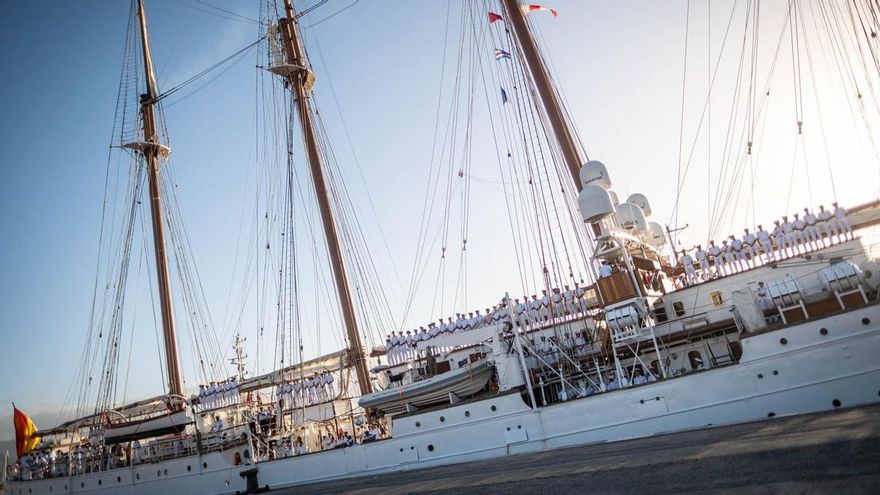
The vessel Juan Sebastián Elcano departed from Cádiz six days ago and is set to dock at the port of Santa Cruz de Tenerife. This ship belongs to the Spanish Navy and has circumnavigated the globe eleven times –most recently in 2021– serving as a training cruise since it first set sail on April 19, 1927.
Measuring 113 metres long with 20 sails reaching 48.7 metres high, it primarily relies on natural wind power to transport its 3,770 tons, despite possessing a diesel engine capable of achieving speeds up to 6.5 knots, equivalent to just over 12 kilometres per hour. Additionally, it is equipped with a 90-kilowatt electric motor along with three diesel generators.
The ship’s captain, Luis Carreras-Presas do Campo, emphasised the favourable weather conditions experienced during the voyage. «We have been able to sail practically all the time», he stated in a media interview. This success can be attributed to the trade winds, «the very same that aided Christopher Columbus in his journey in 1492″, which predominates in the Islands. According to the captain, this wind has enabled them to «achieve all objectives for the seafaring atmosphere and the adaptation to life aboard» by the vessel’s midshipmen and students.
Moreover, the Canary Islands provide additional advantages to the 240 individuals currently onboard. The captain expressed gratitude for the warm welcome they receive each time they dock in a Canary port, describing the emotional weight that each visit carries. «We recharge our energy, spirit, and necessary strength», he remarked, «to continue our journey.
He further highlighted the geographical significance of the Islands “before making the oceanic leap towards America” and “serving as a strategic point for centuries for Spanish sailors.
One of the 76 midshipmen, Jaime Montaner, elaborated on the daily routine aboard the ship. The day commences at seven in the morning with classes and onboard maneuvers. As afternoon approaches, they enjoy “a brief period” of leisure for exercise, reading, or socialising with their peers.
This young engineer admitted that the experience has amazed him, noting that “sailing is entirely different and awe-inspiring» and he added that «it is quite distinct from other types of vessels.
Another first-year student, Gonzalo Sanchez, was responsible for showcasing the ship’s bridge, where the steering and radar systems are located, and from where the vessel’s direction is managed. He highlighted the responsibility it entails, needing to ensure “the intended course is maintained, the sails are correctly positioned, and the wind’s direction is monitored.” During this initial year, access to the area is granted two hours during the day and four hours overnight. In his view, “it is irrelevant» whether it’s sunny or not, as «one must be prepared for anything.
In response to inquiries about living alongside Princess Eleanor, heir to the Spanish Crown, all concur that «she is just one of us». «No distinction is made aboard the ship», they explain, «as we are all equal and perform the same tasks to facilitate our learning.
They will spend six months together, and although just a week has passed, they feel that «they know each other well, and barriers are being broken down» as «the time here significantly develops camaraderie» which they affirm is essential «if one wishes to grow as an individual, sailor, and Spaniard».














